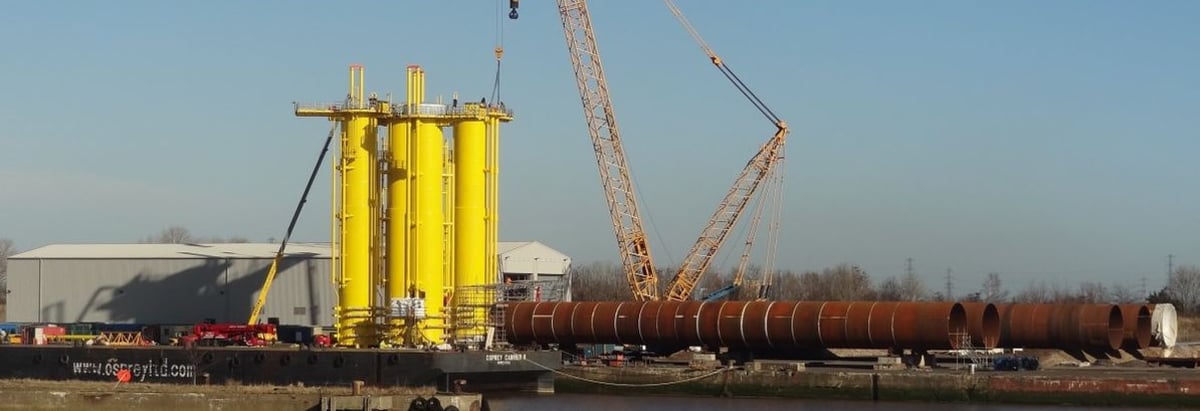
I am going to take a deep dive into Eidesvik Offshore ASA’s (OB:EIOF) most recent ownership structure, not a frequent subject of discussion among individual investors. When it comes to ownership structure of a company, the impact has been observed in both the long-and short-term performance of shares. Different types of investors can have varying degrees of influence on a company’s management team. For example, an active institutional investor may be more likely to hold a company accountable for certain actions whereas a passive fund will move in and out of stocks without regards to corporate governance. The implications of these institutions’ actions can either benefit or hinder individual investors, so it is important to understand the ownership composition of your stock investment. Therefore, it is beneficial for us to examine EIOF's ownership structure in more detail.
View our latest analysis for Eidesvik OffshoreInstitutional Ownership
Institutional investors transact in large blocks which can influence the momentum of stock prices, at least in the short-term, especially when there is a low level of public shares available on the market to trade. A low institutional ownership of 7.33% puts EIOF on a list of companies that are not likely exposed to spikes in volatility resulting from institutional trading. Apart from low institutional ownership, another indicator of EIOF's low popularity is the fact that the company is only covered by 2 analyst.Insider Ownership
Another important group of shareholders are company insiders. Insider ownership has to do more with how the company is managed and less to do with the direct impact of the magnitude of shares trading on the market. EIOF insiders hold a not-so-significant 1.50% stake in the company, which somewhat aligns their interests with that of shareholders. However, a higher level of insider ownership has been linked to management executing on high-returning projects instead of expansion projects for the sake of apparent growth. It would also be interesting to check what insiders have been doing with their shareholding recently. Insider buying can be a positive indicator of future performance, but a selling decision can be simply driven by personal financial requirements.General Public Ownership
The general public holds a substantial 54.52% stake in EIOF, making it a highly popular stock among retail investors. With this size of ownership, retail investors can collectively play a role in major company policies that affect shareholders returns, including executive remuneration and the appointment of directors. They can also exercise the power to decline an acquisition or merger that may not improve profitability.Private Company Ownership
Another important group of owners for potential investors in EIOF are private companies that hold a stake of 36.65% in EIOF. These are companies that are mainly invested due to their strategic interests or are incentivized by reaping capital gains on investments their shareholdings. With this size of ownership in EIOF, this ownership class can affect the company's business strategy. As a result, potential investors should further explore the company's business relations with these companies and find out if they can affect shareholder returns in the long-term.Next Steps:
Institutional ownership in EIOF is not at a level that would concern investors. We are less likely to see sustained downtrends or significant volatility resulting from large institutional trading. However, ownership structure should not be the only focus of your research when constructing an investment thesis around EIOF. Instead, you should be evaluating company-specific factors such as the intrinsic valuation, which is a key driver of Eidesvik Offshore’s share price. I highly recommend you to complete your research by taking a look at the following:
- Future Outlook: What are well-informed industry analysts predicting for EIOF’s future growth? Take a look at our free research report of analyst consensus for EIOF’s outlook.
- Past Track Record: Has EIOF been consistently performing well irrespective of the ups and downs in the market? Go into more detail in the past performance analysis and take a look at the free visual representations of EIOF's historicals for more clarity.
- Other High-Performing Stocks: Are there other stocks that provide better prospects with proven track records? Explore our free list of these great stocks here.
Valuation is complex, but we're here to simplify it.
Discover if Eidesvik Offshore might be undervalued or overvalued with our detailed analysis, featuring fair value estimates, potential risks, dividends, insider trades, and its financial condition.
Access Free AnalysisHave feedback on this article? Concerned about the content? Get in touch with us directly. Alternatively, email editorial-team@simplywallst.com
Simply Wall St analyst Simply Wall St and Simply Wall St have no position in any of the companies mentioned. This article is general in nature. We provide commentary based on historical data and analyst forecasts only using an unbiased methodology and our articles are not intended to be financial advice. It does not constitute a recommendation to buy or sell any stock and does not take account of your objectives, or your financial situation. We aim to bring you long-term focused analysis driven by fundamental data. Note that our analysis may not factor in the latest price-sensitive company announcements or qualitative material.
About OB:EIOF
Eidesvik Offshore
Provides services to the offshore supply, subsea, and offshore wind market in Norway.
Excellent balance sheet with questionable track record.
Similar Companies
Market Insights
Community Narratives





